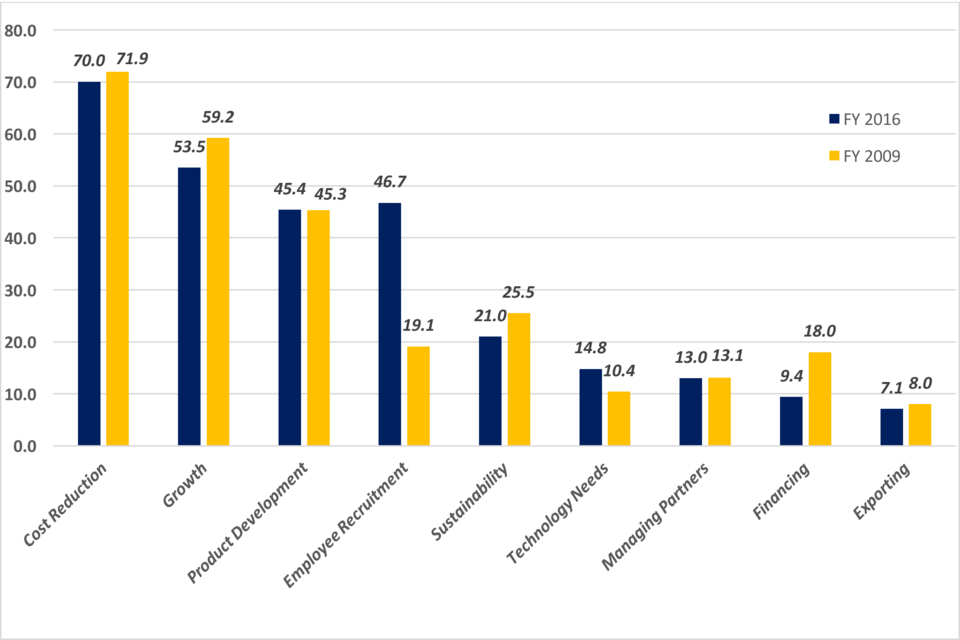Manufacturing Innovation Blog
Powered by the Manufacturing Extension Partnership

Every January, I take some time to look at what our MEP clients are saying about the future and the challenges they face. It’s usually part of my New Year’s resolution to rack up the responses. I’ve been writing this basic story for eight years. Especially this year, it’s useful to take the time to step back and consider what is happening with our manufacturing clients and their businesses. This exercise provides a look into the minds of some of the CEOs who run the over 200,000 small manufacturers across the U.S. and provides important market intelligence to guide future MEP activity.
As part of the NIST MEP survey, we ask our center clients to identify the top three challenges their companies face over the next three years. We’ve been asking this question for eight years and thousands of clients take the time to give us their thoughts regarding the challenges ahead. Their challenges have changed as the economic environment has changed. Some have been enduring (continuous improvement, growth, etc.) and others have become more (or less) important over time.
For example, seven in ten clients cited cost reduction as a challenge in FY 2016—as they have for the past few years. However, there are some important shifts among the challenges cited by clients since FY 2009.
Taken separately, growth and product development/innovation challenges rank second and third respectively in FY 2016. Slightly more than five in 10 clients report growth as a challenge and just over 45 percent of the clients cite product development as a challenge for them in the next three years. In FY 2016, nearly 47 percent of the clients responding to the survey reported employee recruitment and retention as an important challenge. This compares to less than 20 percent of the clients in FY 2009 who reported that employee recruitment and retention was a challenge.
In addition, a few other challenges are more important than they were eight years ago. The share of clients citing technology needs as a challenge rose by 4 percentage points—from roughly 10 percent in 2009 to over 14 percent in 2016.
On the other hand, smaller shares of clients report that growth, sustainability, and financing are important challenges compared to eight years ago. For instance, the share of clients identifying financing as a challenge fell from 18 percent in 2009 to under 10 percent in 2016. This probably reflects the financial marketplace and the fact that many firms have cleaned up their balance sheets. The declining share of clients saying that growth is an important challenge (but more than half the clients still cite it as important even now) may likely reflect the uptick in manufacturing activity. The share of clients reporting sustainability as a challenge fell by just under 5 percentage points over the past eight years and the share of clients reporting exporting as a challenge fell slightly.

The consistency in the picture of these challenges is interesting. I suspect some of this reflects underlying changes in the economic environment and changes across MEP client companies as they respond to new opportunities and challenges in the markets they serve.
Looking back is always useful, but it is also interesting to ponder what our clients may suggest for future MEP services to respond to their new and emerging needs. MEP centers can help clients change, but they must implement the change themselves. These data, while drawing on only MEP clients, represent an important piece of information and insight into the top-of-mind challenges facing a broad cross section of manufacturers across the United States. Challenges remain in helping companies improve their performance, but MEP Centers are continually working to help manufacturers address them.


